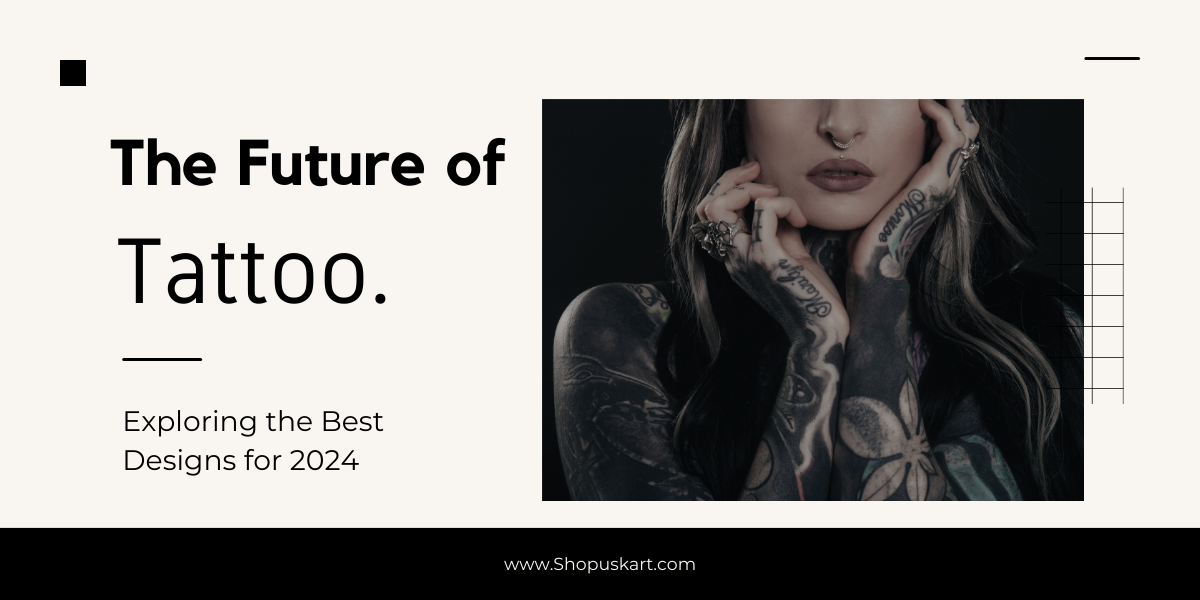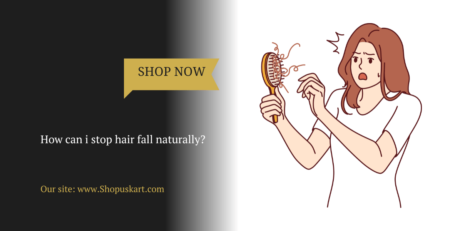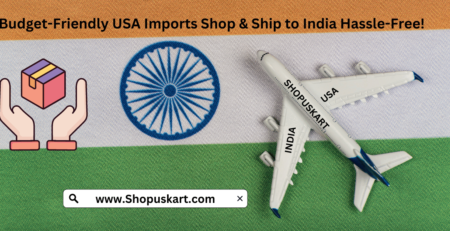The Future of Tattoos Exploring the Best Designs for 2024
The Future of Tattoos: Exploring the Best Designs for 2024
Are you ready to turn your body into a canvas for the future? Tattoos have come a long way from being mere ink etchings on skin; they’ve evolved into masterpieces that reflect one’s personality, beliefs, and aspirations. As we step into 2024, it’s time to unravel the boundless possibilities that lie ahead in the world of tattoos. Join us as we embark on an exciting journey exploring the best designs predicted to dominate this futuristic era – where art meets technology and self-expression knows no bounds. Get ready to be inspired by cutting-edge designs and innovative techniques that will redefine what it means to wear your heart (and your dreams) on your sleeve!
Introduction to the ever-growing popularity of tattoos and their evolution throughout history.
Tattoos have become increasingly popular in recent years, with more and more people choosing to permanently ink their bodies with meaningful designs. From small, delicate symbols to intricate full-body pieces, tattoos have evolved into a form of self-expression and an art form that captures the attention of many. But what is the reason behind the ever-growing popularity of tattoos? To understand this, we must take a journey through the history and evolution of tattoos.
Tattoos have been an integral part of human culture for thousands of years. The earliest evidence dates back to ancient civilizations such as Egypt, where mummies were found with tattooed designs on their skin. In Polynesian cultures, tattoos were seen as status symbols and were often used to depict one’s social standing or achievements.
In ancient Greece and Rome, however, tattoos were associated with criminals and slaves. It wasn’t until Captain James Cook voyaged to Tahiti in the 18th century that tattoos gained popularity among Europeans as they encountered Polynesian tribes with intricate full-body tattooing traditions.
However, it was not until the late 19th century that technological advancements allowed for easier and safer methods of tattooing. This led to a surge in popularity among sailors who would get nautical-themed tattoos as permanent reminders of their travels.
By the mid-20th century, tattoos became symbols of rebellion against societal norms for bikers and gang members. However, in recent years they have shed this negative connotation and have become mainstream thanks to celebrities proudly displaying their inked bodies.
Modern-day tattoo designs are heavily influenced by pop culture, fashion trends, personal preferences, and cultural heritage. Not only do they serve as a means for self-expression but also hold significant meaning for individuals. Many people get memorial or commemorative pieces that pay homage to loved ones or important events in their lives.
Additionally, social media has played a significant role in fueling the growth of tattoos‘ popularity. With platforms like Instagram and Pinterest showcasing stunning tattoo designs, more people are inspired to get inked.
The future of tattoos looks bright as it continues to evolve with new techniques and technology constantly emerging. From traditional black-and-white designs to the rising trend of watercolor tattoos, the possibilities are endless. The acceptance and appreciation for tattoos in mainstream society also bode well for their continued popularity.
The ever-growing popularity of tattoos can be attributed to a combination of factors such as technological advancements, societal perceptions, and individual preferences. They have come a long way from being a cultural tradition to a form of self-expression that is here to stay.
Overview of the current tattoo trends and styles.
Tattoos have been an integral part of human culture for centuries, serving as a form of self-expression, cultural identity, and personal statement. With time, tattoo trends and styles have evolved significantly, becoming more diverse and embracing a wider range of influences and techniques.
One of the most prominent current tattoo trends is minimalism. This style focuses on simple designs with clean lines and minimal shading. Minimalist tattoos are often small in size and commonly placed on areas such as wrists, fingers, or ankles. These delicate designs can be anything from geometric shapes to tiny symbols or words, making them ideal for those who prefer a subtle way to adorn their skin.
Another popular trend is realism or photorealism tattoos. This style involves creating lifelike images that look like they could be photographs stuck onto the skin. Common subjects for realistic tattoos include portraits of loved ones or famous figures, animals, landscapes, or objects like flowers or cars. Creating these types of tattoos requires exceptional skill and attention to detail from the tattoo artist.
Watercolor tattoos have also gained popularity in recent years. Inspired by the fluidity and vibrancy of watercolor paintings, this style uses splashes of color without black outlines to create dreamy and abstract designs. The result is often strikingly beautiful and unique since each watercolor tattoo is one-of-a-kind; however, it takes an experienced artist to ensure that the colors blend seamlessly into each other.
Another significant trend in modern tattooing is incorporating elements from different cultures into designs. For example, tribal motifs inspired by Polynesian or Maori traditions have become popular choices for many individuals looking for a meaningful design rich in symbolism.
In addition to constantly evolving styles within the world of tattooing, there has also been much progress in the technology used to create them. With advancements in techniques such as laser removal or permanent makeup products designed to fade ink over time – known as “the half sleeve”, people are now more open to getting tattoos done than ever before. Moreover, there has been a surge in demand for white ink tattoos that are subtle and only visible under certain lighting conditions.
The current tattoo trends and styles showcase the endless possibilities of self-expression through body art. From minimalist designs to realistic portraits and colorful watercolor creations, there is something for everyone seeking to adorn their skin with meaningful and unique designs. With constant evolution in techniques and technology, the future of tattoos looks bright, promising even more creativity and diversity in the tattoo world.
A discussion on the emerging technology in the tattoo industry.
1. A discussion on the emerging technology in the tattoo industry.
In recent years, the art of tattooing has experienced a significant evolution thanks to advancements in technology. From faster and more precise techniques to endless design possibilities, these innovations have revolutionized the tattoo industry and opened up a whole new world for both artists and clients.
One of the most notable advancements in tattoo technology is the use of automated machines for creating designs. These machines use computer-generated images and stencils to produce perfectly symmetrical tattoos with intricate details that would be nearly impossible to replicate by hand. This has not only made the process faster and more efficient but also allows for greater precision, resulting in sharper lines and more detailed shading.
Another exciting development is the rise of 3D printing in tattooing. With this technology, artists can now create custom-made, lightweight prosthetic limbs that incorporate a person’s desired tattoos directly onto them. This innovation has been particularly beneficial for amputees who want to cover their scars with unique designs or simply express themselves through body art.
Furthermore, there have been significant advancements in ink pigments used for tattoos. Traditional black ink has been replaced with vibrant colors that are longer-lasting due to improvements in color stabilization techniques. Additionally, biodegradable ink has become increasingly popular as it breaks down naturally over time without leaving any harmful chemicals behind.
Moreover, virtual reality (VR) technology has also found its way into the tattoo industry. By using VR headsets, clients can now see realistic 3D renderings of their potential tattoos before getting them permanently inked on their skin. This allows them to make well-informed decisions about size, placement, and design before committing to something they may regret later on.
In addition to these technologies revolutionizing how tattoos are created physically, they have also transformed how they are designed digitally. Software programs like Procreate and Adobe Illustrator enable artists to create intricate designs quickly while providing an endless array of tools and effects. This has allowed for even more intricate and personalized tattoos, bringing a new level of creativity to the industry.
Despite the numerous benefits brought by emerging technologies in the tattoo industry, some traditionalists argue that it takes away from the authenticity and artistry of hand-drawn tattoos. However, with proper training and a balance between traditional techniques and modern technology, artists can create remarkable masterpieces that combine both approaches.
Emerging technologies have undoubtedly made their mark on the tattoo industry, bringing about faster processes, greater precision, enhanced artistic capabilities, and ultimately expanding opportunities for self-expression. As these advancements continue to evolve, we can only imagine what other exciting possibilities lie ahead for this ancient art form.
Future predictions for tattoo designs in 2024 based on current trends and technology advancements.
Future Predictions for Tattoo Designs in 2024
Tattoos have been a form of self-expression and body art for centuries. From tribal designs to modern intricate pieces, tattoos have evolved into a mainstream trend that is constantly evolving. As technology advances and social norms shift, the world of tattooing is expected to see major changes in the next five years. Here are some future predictions for tattoo designs in 2024 based on current trends and technology advancements.
1. Interactive Tattoos
Imagine having a QR code or chip embedded in your skin that can be scanned to display personalized content or even control smart devices. This may sound like something out of a sci-fi movie, but with advancements in biohacking, it may become a reality shortly. These interactive tattoos would take personalization to a whole new level, allowing individuals to showcase their interests and personality through constantly changing digital displays.
2. Augmented Reality Tattoos
Another futuristic technology that could revolutionize the world of tattooing is augmented reality (AR) tattoos. AR tattoos would allow inked designs to come to life through mobile devices or special glasses, adding an extra dimension to traditional body art. This could open up endless possibilities for creative expression and storytelling through tattoos.
3. Biodegradable Ink
Eco-consciousness is becoming increasingly important as we move towards sustainable living practices. In line with this trend, biodegradable ink may become more popular among tattoo enthusiasts who want to lessen their environmental impact without compromising on their love for body art. Biodegradable ink uses natural pigments rather than synthetic ones, reducing the risk of allergic reactions and making it safer for both humans and the environment.
4.Bionic Body Art
With prosthetic limbs becoming more advanced and lifelike, bionic body art could soon be integrated into tattoo designs as well. Innovative companies are already developing electronic skin that can sense touch or temperature changes on prosthetics. This technology could be used in tattoos, creating a futuristic and functional form of body art that is truly one-of-a-kind.
5. Minimalism
While technological advancements may bring about new and exciting possibilities for tattoo designs, there will always be a place for simplicity and minimalism in the world of body art. In 2024, we can expect to see more people opting for smaller, understated designs with clean lines and minimal color palettes. This trend is already gaining popularity as it allows individuals to have meaningful tattoos without being too flashy or attention-grabbing.
The future of tattooing looks very promising with endless creative opportunities on the horizon thanks to advancements in technology and changing social trends. Whether it’s interactive tattoos or bionic body art, we look forward to seeing some groundbreaking designs that will continue to push the boundaries of traditional tattooing.
The rise of minimalist tattoos and their impact on the traditional tattoo culture.
1. The rise of minimalist tattoos and their impact on the traditional tattoo culture.
Tattoos have been a part of human history for centuries, with their origins tracing back to ancient civilizations. In recent years, however, there has been a significant shift in the tattoo culture – the rise of minimalist tattoos. These delicate and simple designs have taken over the once-popular trend of large and intricate tattoos.
Minimalist tattoos are characterized by their simplicity, clean lines, and use of negative space. They often consist of single-line drawings, geometric shapes, or small symbols that hold personal meanings for the wearer. Popular choices include flowers, animal silhouettes, arrows, and words or quotes written in calligraphy.
One factor contributing to the popularity of minimalist tattoos is social media platforms like Instagram and Pinterest. These platforms have made it easier for artists to showcase their work and for individuals to explore different styles from around the world. With easy access to inspiration and ideas, people are opting for smaller designs that are highly photogenic and visually appealing on these platforms.
Moreover, minimalism as a lifestyle trend has also influenced the popularity of these tattoos. In a world where everything seems chaotic and overwhelming at times, many individuals are turning towards simpler aesthetics to find peace and clarity. These tattoos serve as reminders to stay grounded in an increasingly fast-paced society.
The rise of minimalist tattoos has had a significant impact on traditional tattoo culture as well. Traditional styles such as tribal or Japanese irezumi often involve large pieces covering large areas of skin with bold colors and detailed imagery. However, with more people opting for small minimalist designs instead of larger ones, there has been a noticeable decline in demand for traditional styles.
This shift has opened up opportunities for artists who specialize in minimalism but may not be proficient in traditional methods. It also allows room for creativity within this style by incorporating elements from other types such as dotwork or watercolor techniques.
On the other hand, some critics argue that the rise of minimalist tattoos has led to a decline in the skill and artistry of traditional tattooing. They argue that these small and simple designs require less technical expertise and take away from the true essence of tattooing as it was originally practiced.
The popularity of minimalist tattoos is here to stay with no signs of slowing down. It has redefined what is considered beautiful and desirable in the world of tattoos, challenging traditional styles while also providing new opportunities for artists to showcase their talent. Whether you are a fan or not, there is no denying that minimalist tattoos have made a significant impact on the future of tattoo culture.
Cultural influences on tattoo designs, including traditional styles from different countries.
Tattoos have been a part of human culture for centuries, with evidence of their existence dating back to ancient civilizations. Today, tattoos continue to be popular and have evolved into intricate and personalized pieces of art. However, beyond just being a form of self-expression, tattoos also hold cultural significance and are deeply rooted in traditional styles from different countries.
One of the most prominent cultural influences on tattoo designs is the Japanese traditional style, known as Irezumi. This style involves large, detailed pieces that often cover the entire body, using bold colors and intricate patterns inspired by nature and mythology. Irezumi is deeply rooted in Japanese culture and has been practiced for centuries. It was initially used as a form of punishment but eventually evolved into a highly respected art form with specific meanings attached to each design element.
Another prominent influence on tattoo designs is Polynesian tribal tattoos from countries such as Samoa and Tahiti. These tattoos are characterized by bold black lines and geometric shapes that often cover large areas of the body. They hold deep spiritual meaning for those who wear them, symbolizing strength, courage, and one’s connection to their ancestors.
In Southeast Asia, Thailand’s traditional hand-tapping technique called “Sak Yant” has gained popularity in recent years. These tattoos are done by monks or holy men using a bamboo stick with a needle at the end dipped in ink made from natural ingredients. The designs are meant to provide protection, good fortune, or ward off evil spirits.
Moving towards South America, we find another unique tradition known as Yantra tattooing in Thailand’s neighboring country – Cambodia. This ancient practice involves tapping special symbols onto the skin using sticks or metal rods before rubbing them with ashes or sandalwood powder mixed with water until they bleed under the skin permanently.
Traditional Celtic tattoos originating from Ireland also hold significant meaning behind their intricate knot designs and patterns inspired by nature. Each design element carries symbolism related to various aspects of life, such as love, loyalty, or family.
On the other hand, in India, henna tattoos have been a prominent tradition for centuries. These temporary tattoos made from the paste of henna leaves are a popular form of body art and are often used for special occasions and celebrations.
As we can see, cultural influences play a significant role in tattoo designs. They not only add diversity and uniqueness to the art form but also preserve traditional practices with deep-rooted meanings behind each design element. The future of tattoos will undoubtedly continue to reflect these rich cultural influences while also adapting to modern trends and techniques.
Creative ways to incorporate personalization and meaning
The art of tattoos has been around for centuries, and with the advancement of technology and tattooing techniques, there seems to be no limit to the possibilities when it comes to designs. However, as tattoos continue to become more mainstream, many people are looking for ways to make their ink even more unique and meaningful. In this section, we will discuss some creative ways to incorporate personalization and deeper meaning into your tattoo design.
1. Incorporate elements from your heritage or culture:
One of the most popular ways to personalize a tattoo is by incorporating elements from one’s heritage or culture. This not only adds a personal touch but also celebrates one’s identity and roots. Whether it’s a traditional symbol or a quote in your native language, incorporating these elements can make your tattoo truly special.
2. Use symbols or imagery that hold significant meaning:
Symbols have been used throughout history to represent ideas, emotions, and beliefs. By choosing symbols or images that hold deep meaning for you personally, you can create a powerful and personalized design. It could be something small like a birth flower representing each family member or something bigger like an animal that holds spiritual significance.
3. Get words or phrases tattooed in different languages:
Another way to add a unique touch to your tattoo is by getting words or phrases inked in different languages. This not only adds an element of mystery but also allows you to express yourself in multiple languages.
4. Create a custom design:
If you have artistic skills (or know someone who does), why not create a custom design for your tattoo? You can draw inspiration from things that are important to you such as memories, dreams, hobbies, or even songs that hold special meaning.
5. Tattoo with loved ones:
Tattooing with friends or family members is another creative way to personalize your ink while strengthening bonds with loved ones at the same time! You can get matching tattoos representative of shared experiences together or use each other’s handwriting for a truly unique touch.
6. Incorporate elements of your favorite hobbies:
Are you an avid nature lover? A music enthusiast? A sports fanatic? Whatever your interests may be, incorporating elements of your favorite hobbies into your tattoo design can add a personal and meaningful touch. For example, you could get a small pine tree tattooed to symbolize your love for hiking or musical notes to represent your passion for music.
Tattoos are not just about having beautiful designs on our skin; they tell our own unique stories. By incorporating personalization and deeper meaning into our tattoos, we can create pieces of art that truly reflect who we are as individuals. So go ahead and let these creative ideas inspire you to design the perfect tattoo that is uniquely yours!
Don’t forget to give us a follow on Facebook!













Leave a Reply